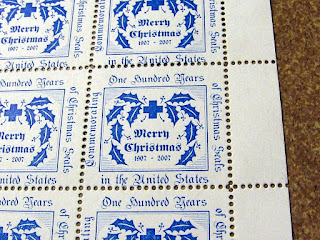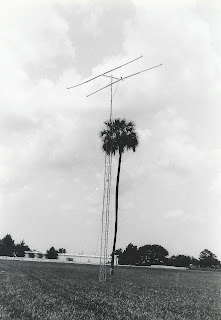This is a reprise from my original article written about fifteen years ago. It is still on my ancient web page, but you need an ancient browser to view it. I thought it best to bring the original story here, and a little added goodie. Before we begin, I might add that this is actually a post I made to the Glowbugs Group, probably around 2000. It is a straight narrative. This was later copied to a section of my old radio website called "Radio Rescuers", stories of rescuing and reclaiming radios from eternal demise. I bring it again, here.
"Air Piracy."
From the Radio Rescuers Journal, entry #3.
This is not so much a tale of radio reclamation from
the electron abyss as much as an episode in my past.
sort of a midnight confession. The following is transcribed directly from my post
to the Glowbugs List. The topic was Novice Memories
and as usual, we deviated into other radio memories. This
is when i told the story of WLRE, AM940 (sort of) . . .
. . . and the Summer of '71.
"Talking about the novice memories brought to
mind another facet of my chequered radio past: Piracy.
Well, not big time. When we moved back to
Fla, we lived for about 2 years in an apartment
snugged into a housing area, one of the largest
in Winter Park at the time. Some of you old
time Winter Parkers might remember 4-Seasons,
not too far from Rollins College. Also not far away was my school, Winter Park
High. And the Orlando Navy Training Center.
Also not far was our shopping center which
contained our local hang-out, Crusty's Pizza.
And Dunkin Donuts, where the cops gathered.
I lived in a 2 story building which had a roof
area that was nearly an acre, ringed by a
rain-gutter. Each corner of the building had
a down spout. My bedroom window was a
scant 2 feet from one of these downspouts. Needless to say, any which way you looked,
you scanned literally hundreds of residences
in only a 2-mile square on the east end of
Winter Park.
The most popular rock station was WLOF,
950 AM, which had the ear of all the teens
in central Florida. There were some FM
wannabees, but during the summer of '71
Winter Park was still an AM Radio town.
We still had Soda Shoppes, Pizza "parlors"
and drive in restaurants where you could
flirt with the waitresses . . . and they
flirted back.
We had a Lafayette store downtown on
Mills and Montana, and it was run by a guy
named "Lafayette Dan". ( when he answered
the phone he would say ' Lafayette . . . . Dan',
hence his nick-name.) Well, Lafayette Dan sold me one of his
Wireless Phono Oscillators and gave me the
tip . . . no, the concept . . . of increasing
the range by coupling the antenna to a large
metal gutter. I took it home, hooked it up
to that downspout, phoned Mary, my girlfriend-
at-the-time, asking her to tune 940 kc on
the dial. I figured i might be noticed if i
was pretty close to WLOF.
She called me back and reported clear reception.
WLRE AM 940 ( or so ) was born. The 'LRE' was
for what was stamped on the chassis of the
oscillator. "Lafayette Radio Electronics". It had 2
tubes, a rectifier and a 50C5. It was slug-tuned
for frequency control, and came pre-set to 1650 kc.
Cost: $ 15.00, no small chunk of change. It had
3 feet of wire for an antenna, and i soldered a coax
at the final tank and alligator clipped the other
end to a part of that downspout which i scraped
clean of paint with a knife. It took a high impedance
input directly from the phonograph cartridge, but
if you cranked the volume enough, you could work
a low impedance output from a reel to reel into it
with a decent noise factor. Sorta.
Well sir, i took my old Tannberg reel to reel
which i was using as a guitar amp, borrowed some
of Mary's fantabulous album collection, airing
everything from CCR to Cat Stevens and Harry
Nilson.I produced an hour of programming obviously
patterned after the Bill Dennis show on WLOF.
I gave the Time, my version of the Weather, a'la
George Carlin's "Hippy-Dippy Weatherman with
the Hippy Dippy weather . . . . . man", various
snippets of David Frye's "Richard Nixon, Superstar",
some pretty daring Alice Cooper, plus various
and sundry editorials against the Orange County
School Board's dress code. I had a large pool-side listener-ship by the youth-age pool, 100 yards
from the "studio".
Took my old Patrolman Pro on the bike and
did a range-check. I could hear myself for just
about a half mile either direction. A one mile
station! A CB buddy of mine who lived over
by the High School could hear me late evenings,
he lived about a mile from me. Not bad for 100 mW
and a gutter.
A significant injection of activity occurred in my
social life. A lot had to do with Mary talking up
the station with the gals. A lot had to do with
my friendship with the local "Arthur Fonzerelli"
type that was the ace pizza flipper at Crusty's,
Jeff.
Jeff was cool.
Jeff was from Chicago.
Jeff had a Honda 350.
Jeff was 19 years old and was a Junior.
He could kick the Juke and make it play
"Theme from Shaft", No. 255.
He wore a tee-shirt under a leather Ike jacket.
His helmet matched the paint of his Honda.
Jeff tuned me in on the shop radio, and i would
take requests, if i could. The juke-box did the
rest. I was close enough, and the population
density was dense enough to effect the local
Pizza business. At least, Jeff thought so. All i had do was mention that Jeff was flippin'
on a given friday night, and the place was
crowded---- mostly with gals. Well, it sure
seemed that way, anyway . . . yeah, Jeff really liked WLRE. Mary, on the
other hand was wondering if it was such a
good thing, after all.
Mary had little to worry.
Well, what put an end to WLRE AM 940 (or so)?
2 things, really.
One was the High School FM Radio Club,
members of which had been noting my activity
over the summer, and in the fall gave me fair
notice they had every intention of reporting me
to the FCC for Part 15 violation. The REAL story
was, i think, that i had an audience after a
fashion. Or so it seemed. They, with their 25
watt FM and 50 ft. Bow ties oriented to the boonies
did not want the potential competition. And
it particularly galled them that I, the goteed
radio geek, could possibly have pulled this off. Well, one need not have a huge range, just a
strategic location. And a huge rain gutter.
That threat alone was not taken very seriously,
but my dad came home one day to announce we had
just bought a house . . . in Goldenrod. The Swamp!
I was crushed. So was Mary. So was Crusty's.
ah, c'est la vie.
It is a good memory, and like all memories, subject
to embellishment. You'll just have to trust me.
Mary moved on, herself. Crusty's was bought out
by Dinos. The Phono Oscillator was traded for
another CB. Jeff went back to Chicago, the
Winter Park High School FM Radio station fizzled
out, and my radio endeavors took another direction
. . . Amateur Radio.
It was a fun summer, though."
That's the end of the narrative. It took a long time to find anything that I could post to show just what it was I was transmitting on. The "Wireless Phono Oscillator" seemed to vanish, leaving no trace! Nobody remembered it at the time of my original posting. I do remember it being in the 1971 catalog, but nobody ever recalled buying or using... or even seeing one! Then, just recently I found this video.
This, my friends, is the transmitter. In the flesh. I wish I had one now!
Can you just hear the crackling reception of 3DN's "Joy to the World" over your AM radio?? I know I sure can.
Thanks for walking down memory road with me.
de wd4nka.


































